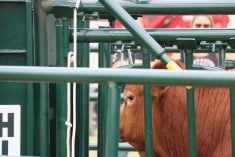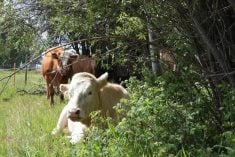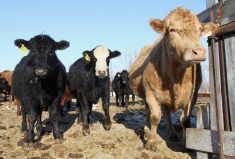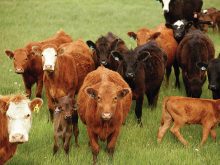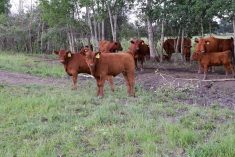The Canadian Veterinary Medical Association designates the first week in October every year in order to increase awareness of veterinary involvement with all animals.
Every year there is a theme and this year’s is most appropriate. It is Animal Health + Human Health + Planet Health = One Health.
One Health really encompasses the entire picture of healthy animals (whether they be farm or pets or wildlife) plus the healthy plant and insect biodiversity and how that plays into human health.
This has never been more evident than with the COVID-19 pandemic.
Read Also
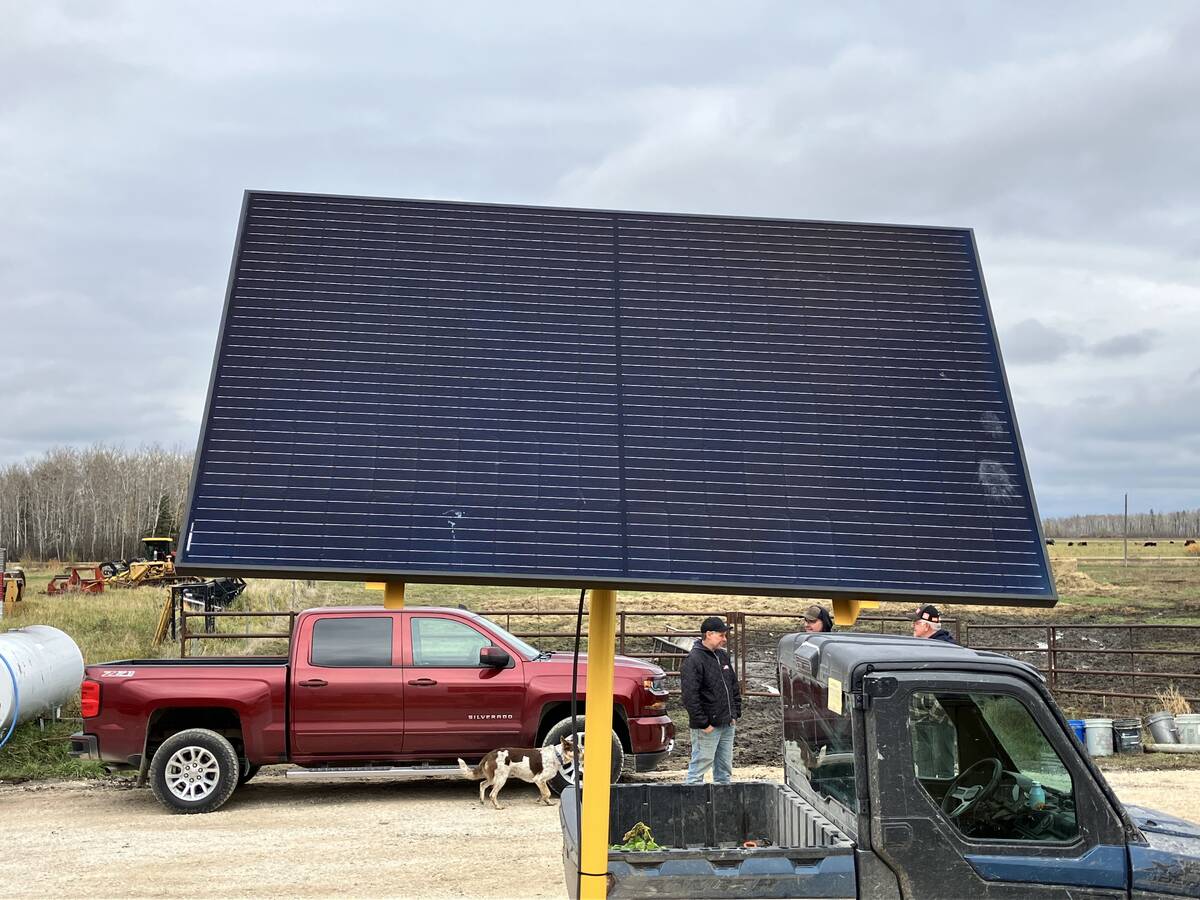
VIDEO: Watering system a cattle health win
Portable livestock watering system helps Manitoba beef producer combat foot rot cases on pasture.
But what does this mean for you?
The farming community knows the value of proper nutrition, decreasing stress and proper, timely immunizations to prevent harmful diseases in their animals. Producers know well that certain diseases can lead to death while others cause problems such as decreased production to poor fertility and so on. The outcomes are varied but if a vaccine is efficacious and does not have many detrimental side-effects, the outcome is herd immunity — which you all know about.
So I am surprised rural communities are lagging behind with COVID vaccination numbers. My thought is that with the vaccinations we do on all production animals on the farm, we know it is a common practice and greatly reduces disease.
COVID-19 is also a zoonosis, which means people can catch this infectious disease from animals. We know bats harbour lots of corona viruses which don’t make them sick. While many may not be transmissible to humans, COVID may have been propagated that way. Mink can be infected and many mink farms in Holland were depopulated because of this. In some cases, humans brought COVID and spread it to the mink, and in other cases, mink spread it to other humans (a back-and-forth scenario).
Other zoonosis we talk about are very serious diseases, such as rabies which is fatal in all species that get initial clinical signs (and is still a huge problem in Africa because of so many rabid canines). Milder zoonosis would be things such as ringworm that we can get from cattle. A milder disease but you have the inconvenience of treating it.
The biosecurity meaasures with COVID-19 (such as social distancing and wearing a mask) are, again, something we understand from our knowledge of life on the farm. We know diseases (such as foot-and-mouth) are spread in the air and they are a big concern in countries that don’t have them. Remember the depopulation of sheep and cattle in Britain years ago that were affected and exposed.
When dealing with scouring calves, we wash our coveralls and clean up really well afterwards — all in the interest of not spreading the organism to other individuals. Giving space at calving time or not overcrowding a feedlot pen reduces stress and minimizes disease transmission.
We also know about capacity in the veterinarian sector.
This pandemic has also led to a much larger pet population and veterinarians who were already busy are being overtaxed. The number of large-animal veterinarians is also very short in many areas. (I would recommend solidifying that relationship if you are ever in need of large-animal veterinary care.) Since December 2018, all antimicrobials are under veterinarians’ guidance. (I think this has gone on without too much of a hiccup except for the feed additive antimicrobials. Some clinics were not set up to handle a lot of bulky feed additive products but they are finding a way to deal with this or eliminating the need for them.)
The last biological (vaccine) that was sold over the counter in feed stores was Tasvax 8, a clostridial vaccine and it now is available only through veterinary clinics or premises that have a vet on staff or consulting to them in some way.
Again, you can look at two-ways but vaccination programs have become more involved and complicated. Chances are there are many other diseases you should vaccinate for. That is something to be discussed with your veterinarian.
There is also the issue of teaching about proper administration, handling and storage of vaccines that should fall on the shoulders of the veterinary clinics to ensure you get maximum benefit of the vaccines in your herds. Again, we want to ensure the best immune response possible. Many of you with your COVID shots must have noticed the cooler bags at each immunization station keeping the vaccine at refrigeration temperature right until it is used. With biosecurity or maximizing immune response with proper handling, it is really about the attention to all the small details.
The COVID pandemic has made us realize how interwoven the planet is and how everyone needs to do their part to prevent transmission — much like we try and prevent transmission of disease on our farms and ranches.
I do believe in listening to the medical authorities on preventing transmission of COVID. Vaccination helps in the prevention or spread of cattle diseases on our premises. So let’s take the lessons we learned on the farm to help make the planet overall healthier.





